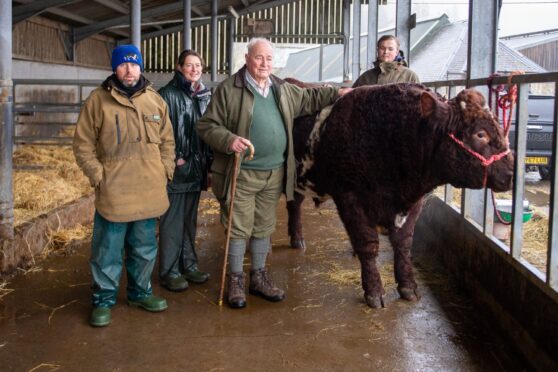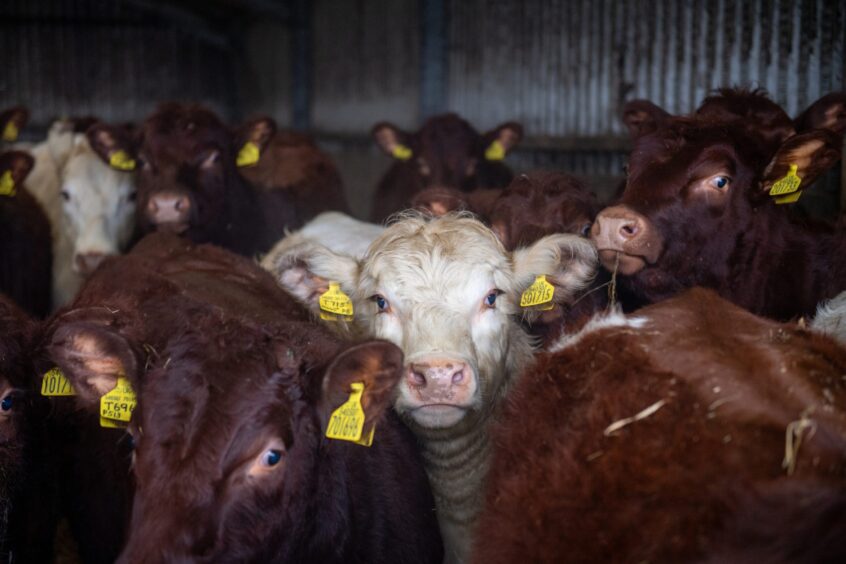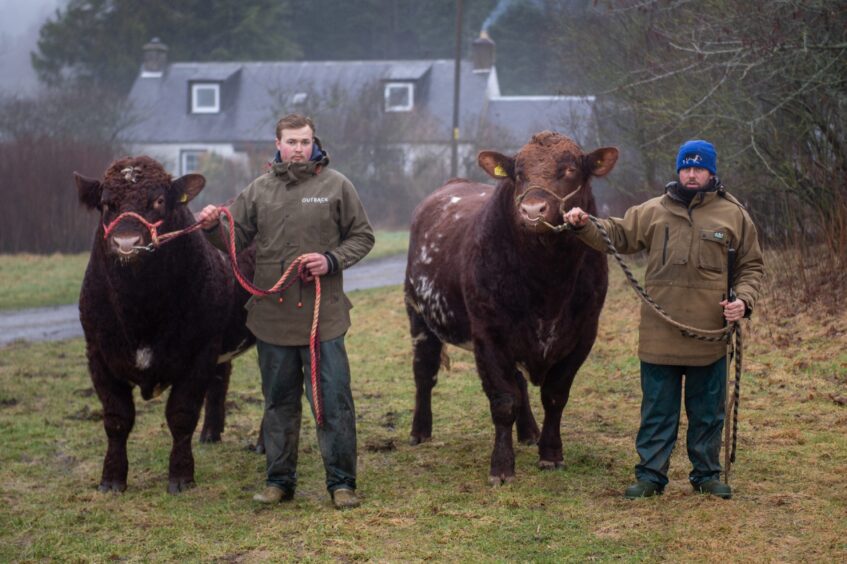Beef Shorthorns are the fastest growing native breed in the UK.
Their fertility, longevity and temperament make for an attractive breed, according to Major John Gibb who is busy preparing bulls for Stirling Bull Sales.
Major Gibb farms at Glenisla House – a Blairgowrie hill farm which he runs with his wife Anne, their daughter Catriona, and stockman Ian Burgess.
The original farm, spanning 8,000 acres, was bought by Major Gibb’s grandfather at the end of the First World War.
His father took over in the lease in the 1920s, with Major Gibb succeeding him in the late 1960s.
Twenty years ago, when one of Major Gibb’s sons emigrated to New Zealand, more than half of the estate was sold off.
The farm, now 3,000 acres, is home to 75 pure breeding Beef Shorthorns along with a few Highlander Shorthorn cross females.
You will also see 600 Blackface breeding sheep, some of which are bred pure for replacements, and the rest crossed with the Bluefaced Leicester or Texel.
The easily managed Beef Shorthorn cattle are outwintered for as long as possible, and usually brought in just before calving in early March.
They are divided into three or four groups and are fed grass silage, with no concentrate.
The older cows are only fed minerals after calving and no creep is fed to the calves, which Major Gibb prefers for more natural growing rates.
Three quarters of the male calves are castrated and sold as suckled calves during October and November. The rest are retained entire.
Major Gibb says since he started with the breed over 50 years ago, it has become commercially orientated, leading to its recent success.
He says native breeds were being outpaced by imported continental cattle, because there was a craze for lean beef which put a lot of people off eating red meat.
“Native breeds have changed and are now back on top for quality flavoured beef,” says Major Gibb.
“Morrisons supermarket is enhancing the breed by favouring our beef and giving us a premium for Beef Shorthorn sired cattle which go through their Shorthorn beef scheme.”
Major Gibb also puts the change down to foreign influences.
Over the last number of years he has imported bull calves from Canada to vary blood lines and has latterly imported semen from leading bulls throughout the world.
One notable AI sire is Australian bull Broughton Park Thunder, which has bred some extremely good bulls.
A Curvebender EBV bull he has produced exciting calves for Glenisla.
He is a trait leader for birth weight and has figures of +10.9 for calving ease, –1.6 for gestation length and eye muscle at +3.3.
Seven years ago Glenisla sold a Thunder son, Glenisla Jack Pot, for 26,000gns which at the time was a record-breaking price.
Since then, there have been many high-priced bulls from Thunder bloodlines.
One of the two bulls for Stirling next week, Glenisla Samson, is by Thunder.
The dam of this big, roan two-year-old bull is Glenisla Carnation Rouge M357, which has bred well for the herd.
The other bull, Glenisla Sirrocco, also roan, is out of Glenisla Foxglove Flake N445.
This two-year-old bull was second in his class at last year’s Royal Highland Show.
He is by Bleaton Protest, an imported Australian bull, which according to Major Gibb, is probably one of the most successfully used bulls in this country in the last ten years.
Major Gibb says one of the bulls, Sirrocco, carries the myostatin gene, which he would prefer not to have in his herd.
The Myostatin gene influences the production of a protein that controls the development of muscle in cattle causing what is commonly referred to as ‘double muscling’.
The Beef Shorthorn Society will accept any copy of the myostatin gene.
Major Gibb says: “When you are looking in a field or a market, these are the ones which tend to catch your eye, however it is quite possible to breed bulls that have desirable beef qualities without carrying myostatin.”
However, he is clearly passionate about the breed which he believes will continue to grow in popularity.
“They are attractive cattle with the benefit of docility, hardiness, ease of management and calving as well as the commercial attributes of good growth and tasty meat with some marbling,” he added.
“The future remains bright.”


